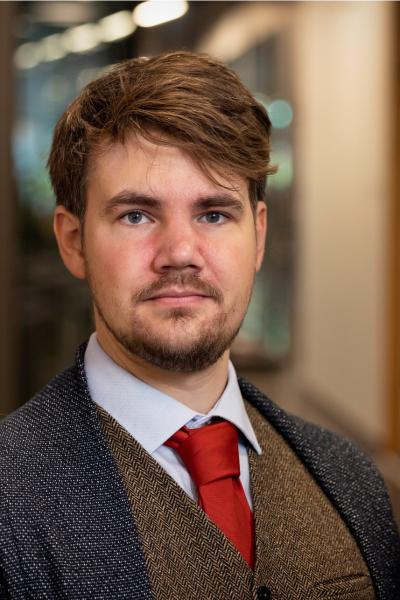Christopher Robin Samuelsson
Postdoctoral position at Institutionen för fysik och astronomi; Fysikens didaktik
- Telephone:
- +46 18 471 35 44, +46 72 999 93 74
- E-mail:
- christopher.robin.samuelsson@physics.uu.se
- Visiting address:
- Ångströmlaboratoriet, Lägerhyddsvägen 1
- Postal address:
- Box 516
751 20 UPPSALA
- ORCID:
- 0000-0003-3070-567X
More information is available to staff who log in.
Short presentation
My research concerns tech-based education (AI and IR cameras), problem solving and reasoning i physics education (temporal and spatial scales, phase transitions) and teacher education (what does the teacher education contribute with?). I also have a general interest in learning theories and the history of learning.
Biography
Research
My research current research focus on teacher and engineering education, AI and education, and active learning and inquiry-based labs. In addition, I explore how students' reasoning when encountering phenomena involving phase transitions can be explained through cognitive resources such as exemplars and p-prims.
I am a member of the research school in subject education at Uppsala University (UpRiSE).
Publications
Selection of publications
- Critical thinking in national tests across four subjects in Swedish compulsory school (2019)
- Going through a phase (2019)
- Hot vision (2019)
- Using infrared cameras in physics and chemistry education (2018)
- Looking for solutions (2017)
Recent publications
- Resourceful students (2023)
- Looking for solutions (2023)
- Att dra nytta av studenters produktiva associationer (2023)
- Critical thinking (2023)
- Productive resources in students’ experimental investigation of phase transition (2023)
All publications
Articles
- Looking for solutions (2023)
- Productive resources in students’ experimental investigation of phase transition (2023)
- Critical thinking in national tests across four subjects in Swedish compulsory school (2019)
- Going through a phase (2019)
- Hot vision (2019)
Books
Chapters
Conferences
- Att dra nytta av studenters produktiva associationer (2023)
- Critical thinking (2023)
- Productive epistemic games in an Investigative Science Learning Environment (2022)
- Productive resources in science education (2022)
- Transitioning into a discipline – exemplars as cognitive resources in learning physics (2021)
- Resources and semiotic resources (2021)
- A proposal for a theoretical construct to acknowledge restricting or distracting resources (2021)
- Resources and barriers in reasoning (2021)
- Adding salt to ice (2019)
- Using infrared cameras in physics and chemistry education (2018)
- Going Through a Phase (2018)
- Phasing the invisible (2018)
- A teaching sequence on phase transition for pre-service primary school teachers (2017)
- Looking for solutions (2017)
- Användning av värmekameror vid öppna laborationer (2016)
- Hot vision – affordances of infrared cameras in education (2016)
Data sets

